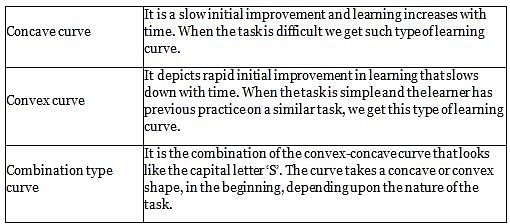MAHA TET Paper 2: Child Development and Pedagogy Test - 9 (Science and Mathematics) - MAHA TET MCQ
30 Questions MCQ Test MAHA TET Mock Test Series 2025 - MAHA TET Paper 2: Child Development and Pedagogy Test - 9 (Science and Mathematics)
Which of the following principles is NOT involved in lesson planning?
Assistive technology for students with hearing loss includes
Who used the word IQ first?
Which of the following could be an end stage of a child possessing bodily-kinesthetic intelligence?
The term comprehensive evaluation implies for:
Which of the following is not the curve of learning?
Which of the following is the most effective?
Which of the following are the key postulates of constructivism?
I: Individual learners actively build knowledge and skills
II: Information exists within the constructs of our minds
III: Behaviour of the learner must be reinforced to ensure learning
IV: Learning is a socially mediated process
Which of the following is an instance of formal learning?
Children with learning disabilities
According to Vygotsky, child’s language and thought develop __________.
To which of the following events does the child first start getting attracted?
As per the Right to Education Act 2009, which of the following statements is correct?
In a multi-lingualism an educator should
Learner-centred teaching means that:
A Class VIII rural student learns the periodic table in a similar fashion to learning 'VIBGYOR', the colours of the rainbow. The technique involved in this learning is
Which of the following are ways to foster creativity?
I. Encourage the use of analogies
II. Discourage curiosity
III. Foster independence
IV. Enhance positive affect
Kohlberg's idea of moral development has levels.
If the intelligence of an individual is 130, then which of the following statements is correct?
NCF 2005 emphasizes the most is:
Theory of multiple intelligence emphasize that:
All of the following are the features of anecdotal record, except that
You must have heard people say that one learns from his own mistakes, on which principle of teaching is this based?
According to Vygotsky, the upper limit of tasks that a learner can successfully perform with the assistance of a more competent individual is termed as:
'Creative writing' should be an activity planned for
Errors of learners often indicate-
Which one of the following is NOT a type of learning according to Gagne’s Theory of Learning?
Which of the following could be an end stage of a child possessing bodily-kinesthetic intelligence?
The term comprehensive evaluation implies for:
Which of the following statement is correct about the process of development of an individual?
|
100 tests
|



















